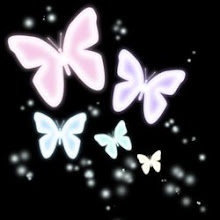After knowing what aging is and how aging progresses, we'll want to know in what aging stage we're in. We start by assessing the parameters of aging, also called the biomarkers of aging. The first step is listing health status and risk factors, such as family history of disease, nutrition status, our exercising habit, environmental risk factors (e.g.: pollution), and our own history of medicine taking. Additional factor that effects aging is psychiatric condition, how we handle stress.
The second step is physical examination, including blood pressure, heart rate, respiration, and temperature. Systolic blood pressure need to be observed closely for people over 45 years of age. On the other hand, diastolic blood pressure is the more important point for people below 45 years of age. One simple examination that we can do at home is the skin elasticity examination. We only need to look in the mirror and see if we can find wrinkles. Another one is to lightly pinch your skin and see if it returns back to its smooth state in an instant or not.
Some examinations need to be done in a clinic or a hospital, including the functional capacity examination and the biochemistry examination. Functional capacity is an important indicator of aging as it connects directly to daily activity. These include the lung and heart capacity, neurological capacity, kidney function, and bone density. Biochemistry examination needs to be done in a laboratory, including the assessment of neurotransmitters, hormones, tumor markers, genetic markers, toxins, and mineral serum level.
These biomarkers of aging closely relate to the quality of life. Therefore, assessment for these signs of aging should be done before the symptoms start to disturb your daily life activity.
The second step is physical examination, including blood pressure, heart rate, respiration, and temperature. Systolic blood pressure need to be observed closely for people over 45 years of age. On the other hand, diastolic blood pressure is the more important point for people below 45 years of age. One simple examination that we can do at home is the skin elasticity examination. We only need to look in the mirror and see if we can find wrinkles. Another one is to lightly pinch your skin and see if it returns back to its smooth state in an instant or not.
Some examinations need to be done in a clinic or a hospital, including the functional capacity examination and the biochemistry examination. Functional capacity is an important indicator of aging as it connects directly to daily activity. These include the lung and heart capacity, neurological capacity, kidney function, and bone density. Biochemistry examination needs to be done in a laboratory, including the assessment of neurotransmitters, hormones, tumor markers, genetic markers, toxins, and mineral serum level.
These biomarkers of aging closely relate to the quality of life. Therefore, assessment for these signs of aging should be done before the symptoms start to disturb your daily life activity.
